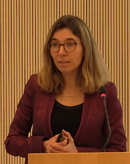Nitrates Directive
Zones rendered vulnerable by nitrates
Directive 91/676/EEC concerning the protection of waters against pollution caused by nitrates from agricultural sources (Nitrates Directive) complements Directive 91/271/EEC (Urban Waste Water Treatment Directive) with respect to the discharge of certain pollutants from agricultural sources. It has the objective of reducing water pollution caused or induced by nitrates from agricultural sources and preventing further such pollution (Article 1). To this end, it combines both approaches of quality objectives and emission limit values by requiring more stringent measures where necessary, in zones to be determined for this purpose.
Zones rendered vulnerable by nitrates
Member States must designate as “vulnerable zones” all known areas of land in their territories which drain into waters in which the nitrate concentration exceeds certain thresholds and those which could be affected by pollution (Article 3 and Article 6), whether or not it is possible to remedy the pollution at source and irrespective of the importance of the abstraction of water involved.
That obligation gave rise to a substantial line of litigation, even until recently. Member States were to make such a designation within a two-year period following the Nitrates Directive (Article 3(2)), and then to review, and if necessary revise or add to the designation of vulnerable zones “as appropriate, and at last every four years, to take into account changes and factors unforeseen at the time of the previous designation” (Article 3(4)). In both situations, they had to notify the Commission within six months. For instance, France did not even attempt to deny it was in breach of that obligation in 2013, for it had failed to draw the consequences of its own 2007 review by designating an additional ten areas (Case C-193/12 Commission v France (available only in French); see, also, Case C-149/14 Commission v Greece (available only in French)).
Member States must thus identify surface freshwaters which contain or could contain more than the applicable maximum concentration of nitrates as well as groundwater which contains more than 50 mg/l nitrates or could contain more than 50 mg/l nitrates, and natural freshwater lakes, other freshwater bodies, estuaries, coastal waters and marine waters that are found to be eutrophic or in the near future may become eutrophic; in all such cases, that requirement applies if there is a risk of eutrophication in the near future if the action programmes required by the Directive are not implemented (Annex I). For instance, Member States are required to identify eutrophic freshwaters or freshwaters at risk of eutrophication in the near future if the action programmes required by the Directive are not implemented (Case C-396/01 Commission v Ireland, para. 44).

